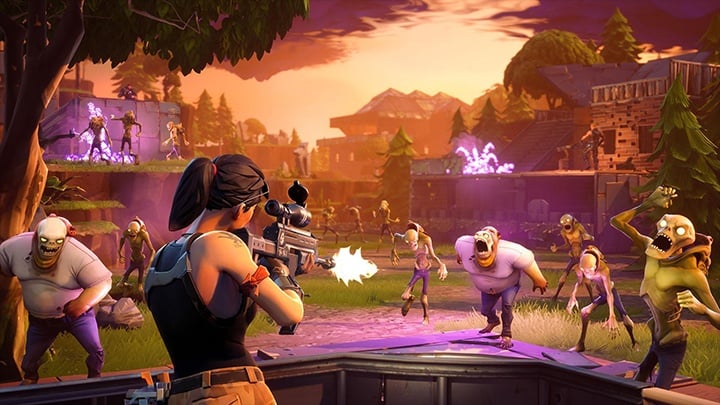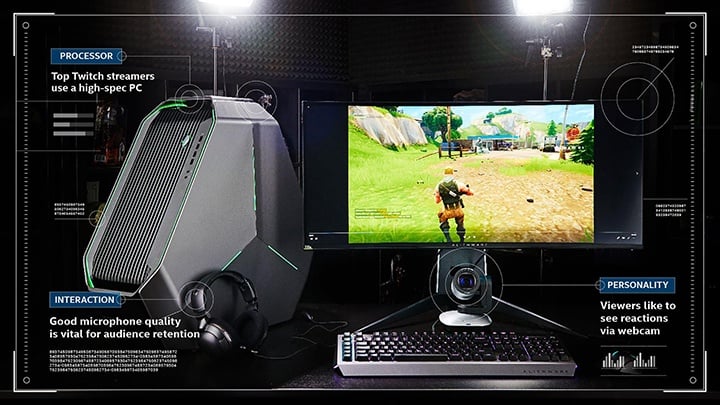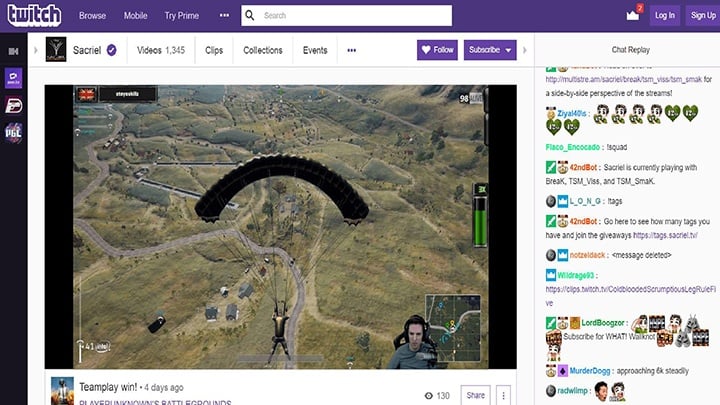Streaming is Hard Work, Take it From the Pros
Dean Evans – February 26, 2018 at 8:21 AM
It might be hard to imagine, but watching other people play video games is close a billion-dollar industry.
It started in the coin-op era, when people clustered around arcade cabinets watching the cool kids chase high scores on Pac-Man. Today, international esports tournaments like the Intel® Extreme Masters draw in millions of online viewers, while thousands of professional gamers can be found streaming PUBG, League of Legends and Hearthstone over Twitch.
Video game streaming is huge. According to SuperData[1], there's now a bigger audience for gaming video than the online audiences of HBO, Netflix, ESPN, and Hulu combined - you don’t need to be an avid player to enjoy a gaming livestream either. According to research by analytics firm Newzoo[2], 42 percent of eSports viewers don’t actually play the games they watch.
So why do people watch? For some, it’s to see a Twitch streamer play a game that has only just been released or to experience a game they haven’t played themselves. For others, it’s to learn how to play a game better or to marvel at insane/weird playthroughs that often bend the accepted laws of gaming mechanics.
“Recently when playing Fortnite I had a teammate fire a rocket under my feet,” says DayZ, PUBG, and Fortnite streamer Sacriel[3], who has over 460,000 followers on Twitch. “I was able to balance my character on top of the rocket and fly across the map, which itself was quite the feat! But while I was on top of the rocket I was able to snipe an enemy team member and then take out his team mate before the rocket blew me up!”

Moments like this can go viral and it’s just one example of why millions of people tune into streamers every day. Where videogame journalists used to drum up excitement for games in magazines and on websites, people now get their kicks following the likes of Sacriel, LionHeartx10, Metal Canyon and Bucks, watching slick Let’s Play videos on YouTube and live streams on Twitch.
"Marvel at insane/weird playthroughs that often bend the accepted laws of gaming mechanics"
“[People watch for] the live engagement,” explains LionHeartx10[4], who plays Total War and Stellaris. “The ability to speak to gaming personas live and, more often than not, get a real-time response. It’s unedited, raw entertainment which seems to be a favourable trend in video. Most people really enjoy reactionary content, which a livestream has buckets of in real-time!”
Sacriel agrees. “Watching a stream is an escape,” he says. “People find inspiration from watching streams and some people improve at games by watching skilful streamers play. There are lots of different types of streamers too – high game skill, high interaction, chill/community streams, comedy streams, very creative streams… Streamers who come up with the most interesting and entertaining features often get a lot of traction.”
Competition for subscribers, followers, views, and likes is fierce. Especially now that anyone can broadcast gameplay online. But the top streamers on Twitch have certain things in common. Most use live streaming software like OBS Studio, XSplit Broadcaster or Gameshow; most film themselves as they play (via a high definition webcam); and most connect with their audience via Twitch and Discord chat.
Engagement is key. “I would say the most important quality [of a streamer] is charisma,” says Metal Canyon[5], who plays X-COM and Star Control 2 on YouTube. “You have to engage the audience, interact with them and try to involve them in the video. People like seeing a streamer's face too, since it's easier to judge their reactions at a glance as they play.”

Streams aren’t just judged by their content. Quality and reliability matter. So live stream video broadcasting requires a fast PC with a good processor and graphics card. Bucks[6] is a regular CS:GO and PlayerUnknown’s Battlegrounds gamer with over 450,000 YouTube subscribers. He uses a system based around an Intel® Core i7™ CPU, 16GB of Corsair Vengeance DDR4 RAM and a water-cooled MSI GeForce GTX 1080 (8GB) SEA HAWK EK X graphics card.
The PC is part of a “multiple monitor setup,” he explains, which consists of “a main monitor for playing and a second monitor for interacting with viewers in the chat and reading out donations and new subscribers. A third monitor can be used as a source for other stream enhancements, such as music.”
Streaming can be hard work – playing a game, commentating on it, while bouncing ideas and discussions back and forth in the chat demands focus, dedication and an unflappable personality. For some streamers, it can also be a full-time job, streaming eight to ten hours a day, with revenue earned via advertising, channel subscriptions, donations, and sponsorship.

Twitch is now rich with a diverse array of video game streams, from fans of PlayerUnknown’s Battlegrounds to personal vlogs via the recently launched Twitch IRL channel. “Twitch is *the* go-to site for live streaming content,” says LionHeartx10. “The whole gaming ecosystem is way more geared towards streaming now. Games even have streaming features, overlays, UI changes and tweaks built into them.”
Part of the appeal of a livestream is its immediacy. Anything can happen.
“Live video is completely improvised and very hard to script,” adds Bucks, “especially within the gaming category. But it creates a raw feel that, when true emotions are shown, such as a funny moment with laughter, everything feels much more real, as opposed to a video clip that’s been edited to enhance these emotions.”
The business of streaming is constantly changing too. With thousands of gamers all competing for attention, it’s tougher to make your mark. You’ve got to be original, genuine (people dislike manufactured drama or overly-energetic/fake reactions), have a strong personality, always involve the audience, and never, ever take yourself too seriously.
That’s when things can start to go wrong. Sometimes ego gets the better of a streamer and they lose their appeal; others get wrapped up in the daily chase for ratings, courting controversy, baiting their rivals, rather than concentrating on quality content. It clouds the fact that watching streams is a generally positive and social experience.
Crucially, those streamers that stand out from the crowd tend to have some unique quality (good or bad) that brings viewers back to their streams time and time again.
What is that quality? Well, if we knew that, we’d all be doing it wouldn’t we?
Sources
- https://www.superdataresearch.com/market-data/gaming-video-content/
- https://newzoo.com/insights/articles/esports-franchises-70-watch-only-one-game-and-42-dont-play/
- https://www.twitch.tv/sacriel
- https://www.twitch.tv/lionheartx10
- https://www.youtube.com/channel/UCs-3AEL1a-wpyeDgsvKfa5w
- https://www.youtube.com/channel/UCY0mugl8WwyUQMYW0M_-aiA

